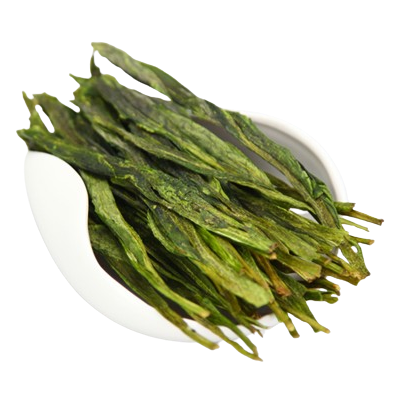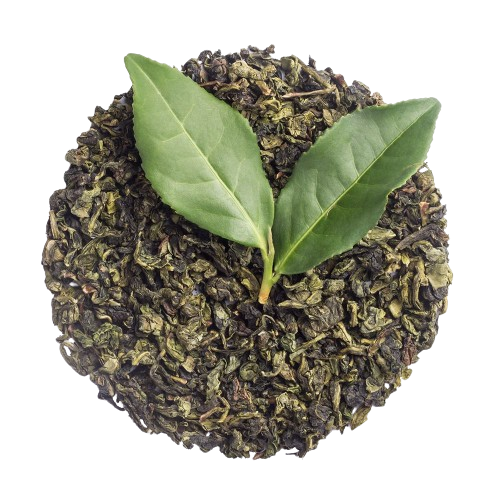01 什么是兰花香?
兰花,一种兰科植物,以其绚丽的形态和吸引人的香气而闻名于世。亚热带地区的东方兰花,尤其以其清雅的花香被古往今来视为传统美德的象征。然而,如果一杯茶能够让人感受到兰花般的香气,那将极大地提升消费者的感官体验,从而增加茶叶的经济价值。例如,优质的乌龙茶品种“安溪铁观音”就以其明显的兰花香气而著称 [1,2]。有研究者将这种香气描述为类似于茉莉花和玉兰花的花香,伴随着一丝果香,并发现这种香型与慧兰的花香密切相关 [3]。
02 哪些茶叶中有兰花香?
对于一些优质的绿茶来说,兰花香是一种难得的品质特征。与乌龙茶不同,绿茶中的兰花香特征则更加温和、高雅和迷人[4]。

03 兰花香是如何形成的?
茶汤中兰花香的气味强度与茶叶中表茉莉酸甲酯的浓度直接相关 [3]。茉莉酸甲酯广泛存在于植物体内,是植物中最重要的激素之一,具有吸引昆虫授粉、抗微生物和抗逆境的功能。
04 兰花香形成与哪些因素有关?
生物和非生物胁迫会增加茶叶中挥发性分子的积累。在乌龙茶的制造过程中,尤其是在做青阶段,香气形成基因的表达增强,导致香气化合物的浓度显著增加 [5]。其他植物胁迫,如光照和温度,也会影响挥发性物质的形成 [6]。
分子构型通常也是生理效应的决定因素。前期研究表明,在表茉莉酸甲酯中,具有表观构型(1R,2S)的异构体具有最高的气味活性 [7]。然而,表型构型在热力学上不稳定,因此它会通过烯醇形式在 C-2位自发转化为 (1R,2R)-茉莉酸甲酯 [8]。在环境温度下,差向异构体以 95:5 的比例达到平衡,有利于茉莉酸甲酯的稳定[9]。
在鲜叶采摘后,茉莉酸甲酯的两种构型在酶的作用下继续合成,直到杀青前积累达到最大值。随着杀青阶段酶的失活,茉莉酸甲酯不再增加,但同时表茉莉酸甲酯会向茉莉酸甲酯的构型转变。较低的干燥温度有利于保留表型构型,从而在茶叶中保留更多的兰花香气 [10]。

05 如何在茶叶加工过程保持茶叶的兰花风味?
在茶叶加工过程中,应给予恰当的萎凋时间,确保内源酶反应充分,以尽可能多地合成茉莉酸甲酯。同时,需注意杀青或干燥温度不宜过高,处理时间不宜过长,以避免过多的表型茉莉酸甲酯转化为茉莉酸甲酯,从而保留更多的表型构型,以确保茶叶中的兰花风味得以保持。
参考文献:
[1] Guo, L., Du, Z., Wang, Z., Lin, Z., Guo, Y., & Chen, M. (2019). Location affffects fatty acid composition in Camellia sinensis cv Tieguanyin fresh leaves. Journal of Food Science and Technology. https://doi.org/10.1007/s13197-019-04034-8.
[2] Liao, Q. M. (2004). Review on the formation of sensory character of Anxi Tieguanyin. Technology of Tea Science, 3, 35–36.
[3] Feng, Z., et al. (2020). Characterization of the orchid-like aroma contributors in selected premium tea leaves. Food Research International 129.
[4] Li, X. B., & Yuan, X. A. (2010). Shucheng Lanhua tea. China Tea, 11, 20–22.
[5] Zeng, L., Watanabe, N., & Yang, Z. (2018). Understanding the biosyntheses and stress response mechanisms of aroma compounds in tea (Camellia sinensis) to safely and effectively improve tea aroma. Critical Reviews in Food Science and Nutrition, 1–14.
[6] Zhang, X., Niu, M., Teixeira da Silva, J. A., Zhang, Y., Yuan, Y., Jia, Y., ... Ma, G. (2019). Identification and functional characterization of three new terpene synthase genes involved in chemical defense and abiotic stresses in Santalum album. BMC Plant Biology, 19, 115.
[7] Acree, T. E., Nishida, R., & Fukami, H. (1985). Odor thresholds of the stereoisomers of methyl jasmonate. Journal of Agricultural and Food Chemistry, 33(3), 425–427.
[8] Vick, B. A., Zimmerman, D. C., & Weisleder, D. (1979). Thermal alteration of a cyclic fatty acid produced by a flflaxseed extract. Lipids, 14, 734–740.
[9] Ward, J. L., & Beale, M. H. (1993). Synthesis and biological activity of stereochemically locked derivatives of jasmonic acid. Journal of the Chemical Society, Perkin
[10] Feng, Z., et al. (2023). Formation and isomerization of (Z)-methyl epijasmonate, the key contributor of the orchid-like aroma, during tea processing. Food Research International 172.
审稿:中国农业科学院茶叶研究所 许勇泉 研究员、中国农业科学院茶叶研究所 刘栩 副研究员
来源: 中国茶叶学会
内容资源由项目单位提供


 科普中国公众号
科普中国公众号
 科普中国微博
科普中国微博

 帮助
帮助
 中国茶叶学会
中国茶叶学会 
